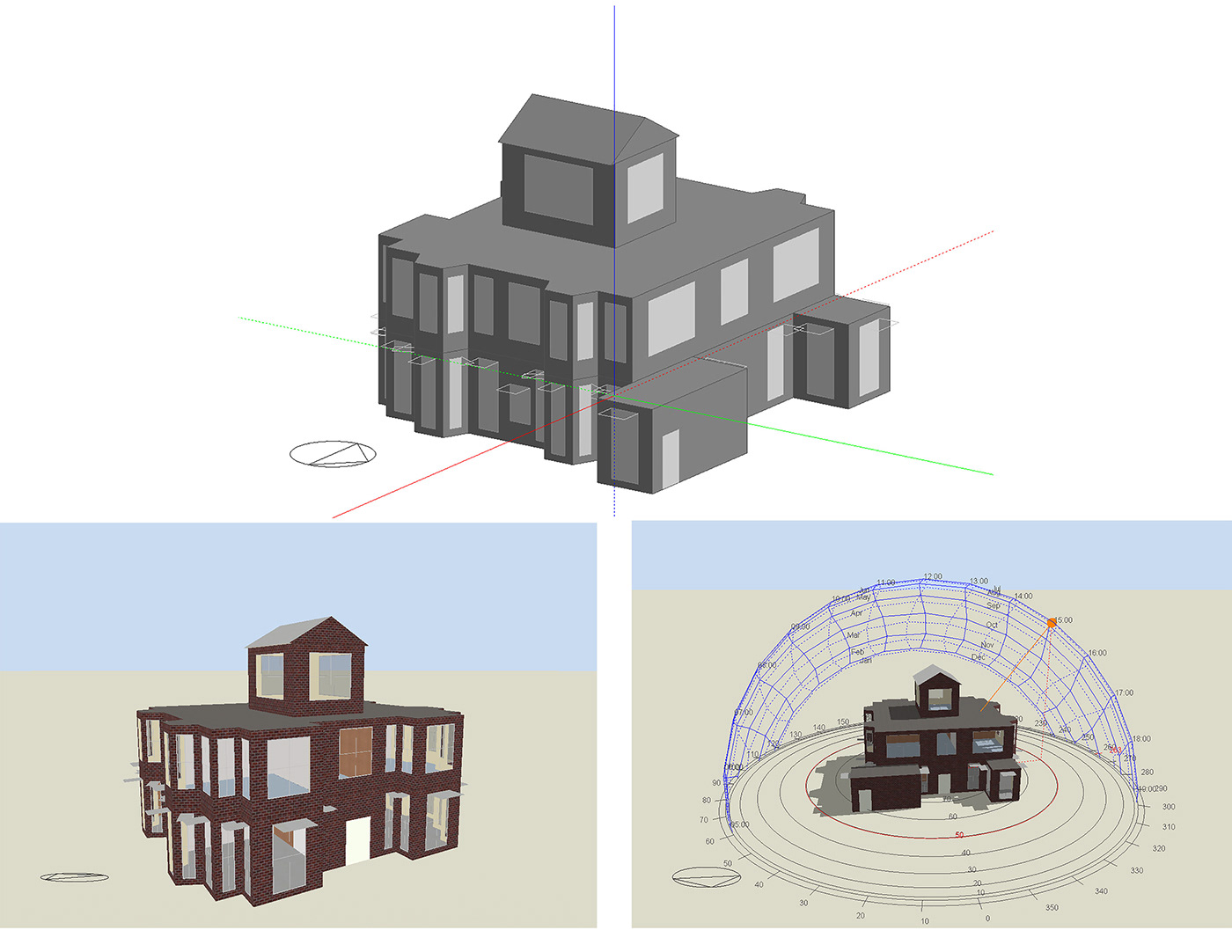
Analysis of a historic building in Georgia
The house project constructed in 1870 still retains its original configuration, materials and features. Analysis of the interior finishes revealed that the original uncoated plaster, paint on wood trim, and shellac on wood doors are still exposed, having never been recoated.
The purpose of this project analysis was to evaluate and validate, through post-occupancy monitoring and analysis, the extent to which the design-phase analysis approximated the actual building performance. This study was conducted over the span of two years and the weather file of Greenville, SC was chosen based on the proximity and the similarity in microclimate for this analysis. The weather data was also compared against the on site weather station for the accuracy of this analysis.

Psychrometric chart from Greenville, SC, showing durations when temperatures exceed 80F, 85F, and 90F
The challenge faced with the use of whole-building energy modeling at the time is how they are tailored for the construction of new buildings or the extensive remodeling of existing structures. The modeling software relies on assumptions about building materials and exterior envelopes that are largely derived from the new construction market. The assumptions were modified by the design team to best fit the building's condition based on its age.
The validation process had two components:
1. Capturing local weather data using a weather station and using it to rerun the design stage eQUEST model and create a more sophisticated validation stage DesignBuilder model.
2. Comparison of the revised temperature and relative humidity simulation results to the original design stage findings and interior environmental conditions measured on site over the past year.
The design team’s hypothesis and predictions were validated by both the advanced model results and measured conditions. A Predicted Mean Vote (PMV) based thermal comfort analysis of DesignBuilder’s advanced validation model outputs also shows only short durations during the summer and winter being in the extreme ‘warm to hot’ and ‘cool to cold’ ranges. During the remaining times of the year, conditions were either in the ‘neutral’ or ‘slightly warm’ or ‘slightly cold’ ranges.

The effect of stratification as observed by measurement sensors, CFD modeling and the DesignBuilder validation model.
Key responsibilities for this project involved simulating the DesignBuilder model for the second year of the study that was used to compare against the installed sensors at the project site, and finishing up the documentation after consulting with the design team.
